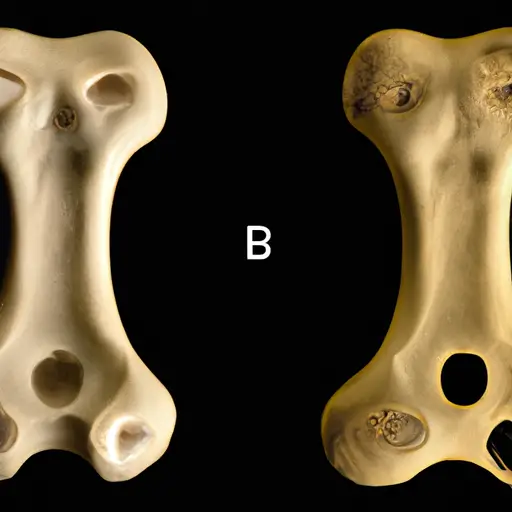Bones act as the basic framework in the Human Skeleton that helps us to sit straight and perform various activities. There are some bones that are tough and heavy while others are soft and light. They can be known generally as Compact bones and Spongy bones respectively. Now, let’s take a look at the differences between them.
So What is the Difference between Compact and Spongy Bones?
1. The Scientific Name of compact bone is cortical bone
Cortical bone is the scientific name of the tough and heavy compact bone whereas Cancellous or Trabecular bone are the scientific names of the light and soft spongy bone.
2. Nature: Compact bones are tough
Compact bones are compact, tough and heavy in nature. They form the shaft of the bone and provides rigidity. Whereas, spongy bones are soft, spongy, and light in nature. They can be found at the end of the bones for easy movement and flexibility.
3. Structure: Compact bones are composed of Osteons
Compact bone constitutes of cylindrical vessels called Osteons and covers outer-most surface of many bones to provide strength and rigidness to the bones. On the contrast, Spongy bone is comprised of various Trabeculae and covers the inner-most surface of many bones to provide flexibility to the bones.
4. Compact bones constitute a large chunk of the human skeleton
Compact bone covers more than half area of the human skeleton and aggregates up-to 80 percent. Spongy bone covers the rest area of the human skeleton and aggregates up-to 20 percent.
5. Compact bones contains the Cavity of Bone Marrow
The cavity is found in between compact bones and stores fat but it is absent in spongy bone.
6. Compact bones are located in the special cavity
The Compact bones store bone marrow and are found in the special cavity. On the contrary, spongy bones are found in between different spaces of lamella but does not have any special cavity for bone marrow.
7. Compact bones are yellowish
The Compact bone takes up yellow colour while the spongy bones are reddish
8. Compact bones functions as the storehouse of fat
The key function of the Compact bones is that they function as the storehouse of fat. Meanwhile, spongy bones produces red and white grainy corpuscles.
9. The lamellae level in Compact bone is in the Haversian manner
In cortical bone, the level of lamellae organization is found in the general Haversian manner. Whereas, in spongy bones, the lamellae are organized as a set of interlocking networks.
10. Compact bones have no gaps between lamella
In compact bone, there is no gap present between lamella. In contrast, in spongy bone, occurrence of small spaces between bone lamella is found.
11 Compact bones provide strength and rigidity
Compact bone is very thick, dense and very smooth in texture that makes it appropriate for providing the strength and rigidity to the body. It can take the pressure easily that may damage the body. Therefore, it acts as a safeguard and protects the body from any type of external damage. Spongy bone on the other hand is made up of web like structures and contains many open spaces. Such bones are present at the end of the bones that helps in the proper movement, bending and rotation of various body parts and are generally present at various joints.
Takeaway
The skeleton plays an important role in performing various daily life activities. It needs various complex muscular action and structural strength. Bones need to be rigid and flexible in order to provide the body a definite shape and ease of movement respectively. Thus, compact and spongy bones jointly work together for better functioning of the human body.

